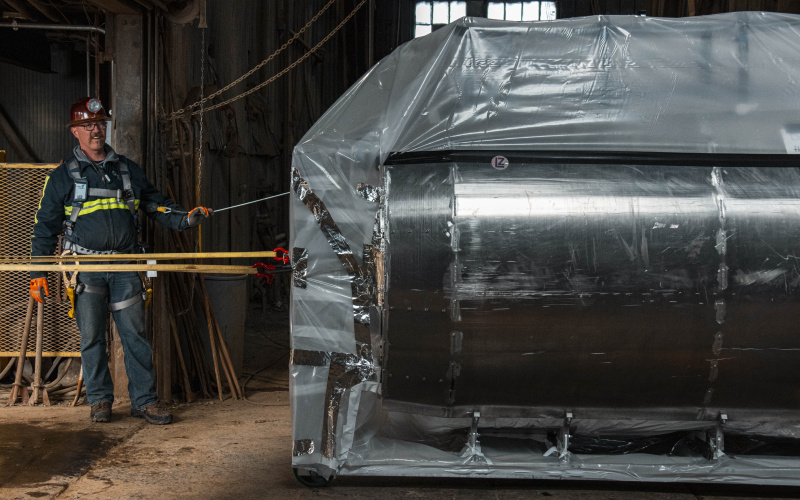About a quarter of the universe is made from a substance humans have never managed to detect. We only know about dark matter, which accounts for the 27 per cent of the universe not made of protons, neutrons and electrons, because of the gravitational effects we have observed on stars and galaxies. Several experiments are underway to try to directly detect dark matter, and LUX-ZEPLIN (LZ) is the latest to get going.

The particles which LZ is hunting are known as WIMPs (weakly interacting massive particles) and, as the name implies, they are characterised by their lack of any detectable interaction with normal matter.
“If WIMPS exist, billions of particles pass through your hand every second but to directly hunt this mysterious particle, we have to bury our detector deep underground to shield it from all the other particles which steadily bombard Earth’s surface,” explained Prof Cham Ghag, a physicist at UCL and collaborating scientist on LZ.
________________________________________________________________
Further reading
________________________________________________________________
Placing dark matter detectors underground – or at least shielded behind huge amounts of solid matter – is an established technique. One of the best known such experiments is ICE CUBE, which is buried in holes bored into the ice at the South Pole, and is looking for neutrinos theoretically generated by dark matter particles captured by the Sun and annihilated in the heart of the star.
LZ is the most sensitive WIMP detector yet built. Weighing over two tons and standing 2.7m tall, it is based around a cryostat (a heavily insulated vessel to hold liquified gas). The construction of its inner cryostat vessel was led by the Particle Physics Department of the UK’s Science and Technology Facilities Council (STFC). This vessel will be filled with 10 tons of liquid xenon cooled to -100°C. If dark matter particles pass through this chamber, researchers believe they will generate bursts of light as they collide with the heavy xenon atoms. The cryostat is made from two tons of ultra-radio-pure titanium.
To eliminate unwanted signals, the cryostat chamber will be surrounded layers of insulation and by two further liquid tanks, the whole assembly being fully vacuum-tight.
The cryostat has now been installed in place 1478m down in the shaft of a disused gold mine at the Sanford Underground Research Facility (SURF) in South Dakota. This operation was preceded by two lowerings of a dummy detector to ensure its safe delivery.
"From a science perspective, we wanted the detector to come down exactly as it was on the surface,” said Theresa Fruth, a postdoctoral research fellow at UCL Physics & Astronomy who works on LZ’s central detector. “The structural integrity is incredibly important, but so is the cleanliness, because we've been building this detector for 10 months in a clean room. Before the move, the detector was bagged twice and inserted in the transporter structure. Then, the transporter was wrapped with another layer of strong plastic. We also need to move all our equipment underground so we can do the rest of the installation work underground."
Dr Pawel Majewski of the STFC team said: “It is extremely gratifying to finally see the unit holding the heart of the LZ experiment at last resting in its final place in the Davis Campus, one mile underground.
Most of the work on LZ is now located underground, and can now begin to ready the equipment for its scheduled start of operations next year.
"It will take months to hook up and check out all of the cables and make everything vacuum-tight,” said Murdock “Gil” Gilchriese, LZ project director and a physicist at Lawrence Berkeley National Laboratory, which is the lead institution for the LZ project. UCL is playing a key role in getting the core of the detector up and running for data taking, and then data analysis. Testing the liquefaction of xenon to fill the cryostat will begin this month.




Swiss geoengineering start-up targets methane removal
No mention whatsoever about the effect of increased methane levels/iron chloride in the ocean on the pH and chemical properties of the ocean - are we...